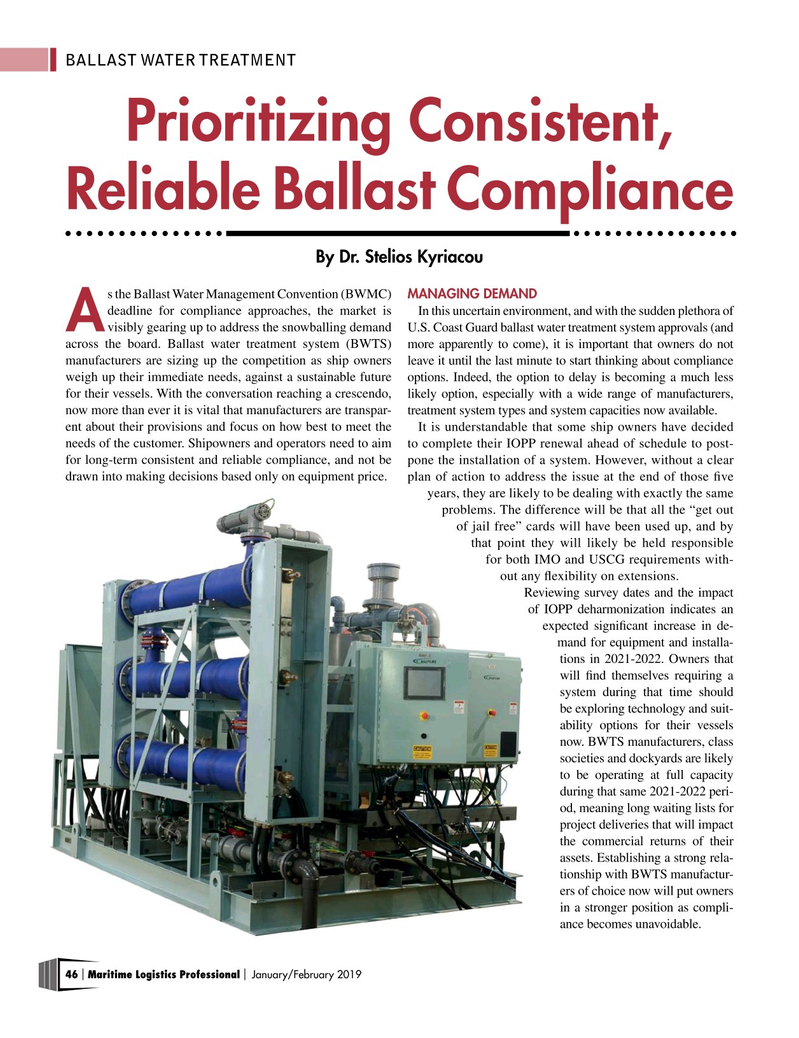
Page 46: of Maritime Logistics Professional Magazine (Jan/Feb 2019)
Cruise Ports Annual
Read this page in Pdf, Flash or Html5 edition of Jan/Feb 2019 Maritime Logistics Professional Magazine
BALLAST WATER TREATMENT
Prioritizing Consistent,
Reliable Ballast Compliance
By Dr. Stelios Kyriacou s the Ballast Water Management Convention (BWMC) MAnAGinG DEMAnD deadline for compliance approaches, the market is In this uncertain environment, and with the sudden plethora of
A visibly gearing up to address the snowballing demand U.S. Coast Guard ballast water treatment system approvals (and across the board. Ballast water treatment system (BWTS) more apparently to come), it is important that owners do not manufacturers are sizing up the competition as ship owners leave it until the last minute to start thinking about compliance weigh up their immediate needs, against a sustainable future options. Indeed, the option to delay is becoming a much less for their vessels. With the conversation reaching a crescendo, likely option, especially with a wide range of manufacturers, now more than ever it is vital that manufacturers are transpar- treatment system types and system capacities now available.
ent about their provisions and focus on how best to meet the It is understandable that some ship owners have decided needs of the customer. Shipowners and operators need to aim to complete their IOPP renewal ahead of schedule to post- for long-term consistent and reliable compliance, and not be pone the installation of a system. However, without a clear drawn into making decisions based only on equipment price. plan of action to address the issue at the end of those fve years, they are likely to be dealing with exactly the same problems. The difference will be that all the “get out of jail free” cards will have been used up, and by that point they will likely be held responsible for both IMO and USCG requirements with- out any fexibility on extensions.
Reviewing survey dates and the impact of IOPP deharmonization indicates an expected signifcant increase in de- mand for equipment and installa- tions in 2021-2022. Owners that will fnd themselves requiring a system during that time should be exploring technology and suit- ability options for their vessels now. BWTS manufacturers, class societies and dockyards are likely to be operating at full capacity during that same 2021-2022 peri- od, meaning long waiting lists for project deliveries that will impact the commercial returns of their assets. Establishing a strong rela- tionship with BWTS manufactur- ers of choice now will put owners in a stronger position as compli- ance becomes unavoidable.
46 Maritime Logistics Professional January/February 2019 | |

 45
45

 47
47
